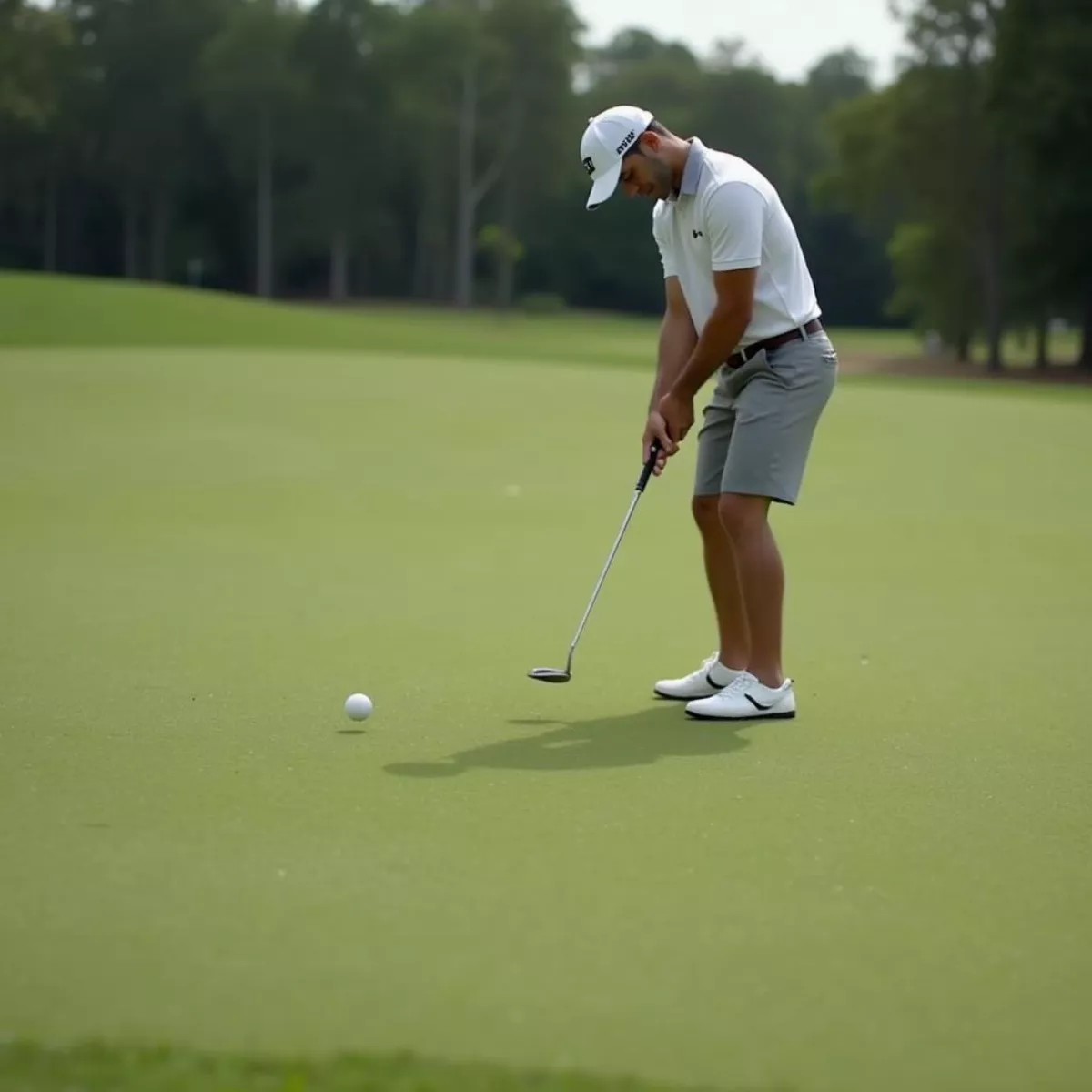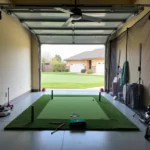Golf is a game of skill, patience, and precision. Whether you’re a newbie or a seasoned player looking to enhance your golfing prowess, this guide will steer you toward improvement. We’ll delve into techniques, mental strategies, and essential tips to elevate your game. So grab your clubs and let’s embark on this journey together!
Table of Contents
- Understanding the Basics of Golf
- Practice Makes Perfect: Effective Drills
- Improve Your Swing Mechanics
- Mastering the Short Game
- Tackling the Mental Side of Golf
- Choosing the Right Equipment
- Golf Etiquette and Course Management
- Key Takeaways
- FAQs
1. Understanding the Basics of Golf
Before diving into advanced techniques, ensure you’ve mastered the fundamentals:
- Grip: Your grip is crucial. A neutral grip allows for better club control.
- Stance: Your feet should be shoulder-width apart. This stabilizes your swing.
- Posture: Keep your back straight and bend slightly at your hips.
Quotes from golf legends often underscore the importance of practice and patience. As Ben Hogan said, “The secret is in the dirt.” When you understand the basics of golf, you’re setting the foundation for great sportsmanship.
2. Practice Makes Perfect: Effective Drills
Regular practice can significantly improve your game. Here are some drills that will help:
- Driving Range Drills:
- Target Practice: Aim for specific targets to improve accuracy.
- Warm-up Swings: Spend 10 minutes taking slow swings to loosen up.
- Chipping Drills:
- One-Handed Chip: Use just your dominant hand to chip balls towards a target. This builds strength and control.
- Landing Zone Chips: Set up a target area (like a towel) and try to land your chips on it.
- Putting Drills:
- Hole Countdown: Begin by putting from 3 feet and gradually increase the distance as you make your shots.
- Alignment Aids: Use coins to help align your putts, ensuring you develop a consistent stroke.
Regular drills keep your skills sharp. Try dedicating at least 30 minutes each week to focused practice.
 Golfer practicing on driving range
Golfer practicing on driving range
3. Improve Your Swing Mechanics
A solid swing is the cornerstone of a successful golf game. Follow these tips to enhance your swing mechanics:
- Film Yourself: Record your swings to identify areas for improvement.
- Use a Mirror: Practicing in front of a mirror allows you to check your posture and grip.
- Weight Transfer: Focus on putting your weight on your back foot during the backswing and transferring it to your front foot during the downswing.
Keep your swing smooth and consistent. Remember, repetition is key!
 Golfer reviewing swing mechanics
Golfer reviewing swing mechanics
4. Mastering the Short Game
Your short game can make or break your overall performance. Here’s how to refine it:
Chipping
- Select a Club Wisely: A pitching wedge or sand wedge is often best for chips around the green.
- Practice Different Lies: From the rough, fairway, or tight lies, get comfortable with the various scenarios.
Putting
- Speed is Key: Work on hitting putts to various distances. Remember, getting the speed down can be more crucial than the actual line.
- Read the Greens: Take time to evaluate slopes and grain. This practice can significantly impact your game.
 Golfer executing a chip shot
Golfer executing a chip shot
5. Tackling the Mental Side of Golf
Golf isn’t just about physical skill; the mental aspect is equally important. Here are a few techniques:
- Visualization: Imagine your perfect shot before making it. This mental rehearsal can improve confidence.
- Stay Present: Focus on one shot at a time. Don’t dwell on past mistakes.
- Routine: Establish a pre-shot routine to calm nerves and enhance focus.
Many golfers underestimate the power of mindset. Developing mental resilience can be the game-changer.
 Golfer visualizing the shot before taking it
Golfer visualizing the shot before taking it
6. Choosing the Right Equipment
Investing in quality equipment can greatly improve your performance. Here’s what to consider:
- Clubs: Make sure your clubs are suited to your skill level. Seek advice from a professional fitting service.
- Golf Balls: Consider options like soft feel, distance, and control balls to match your playing style.
- Shoes: Comfortable, well-fitting shoes with good traction are essential for stability.
Quick Reference Table for Club Types
| Club Type | Use | Typical Distance (Yards) |
|---|---|---|
| Driver | Long distance off the tee | 230-300 |
| Iron | Mid-range approach shots | 150-200 |
| Wedge | Short game and chipping | 50-150 |
| Putter | For putting on the green | N/A |
 Various golf clubs in a golf bag
Various golf clubs in a golf bag
7. Golf Etiquette and Course Management
Understanding golf etiquette is essential, not only for your enjoyment but for that of others as well:
- Be Respectful: Keep noise to a minimum and avoid distracting your playing partners.
- Repair the Course: Take care of divots, ball marks, and bunkers.
- Pace of Play: Be ready for your turn and keep up with the group ahead.
Course management also plays a pivotal role. Here are essential strategies:
- Know Your Distances: Understanding how far you can hit each club will inform your shot selection.
- Play to Your Strengths: Avoid risks unless necessary. Play it safe when needed.
- Assess Hazards: Make informed decisions when approaching water or bunkers.
 Golfers waiting their turn, respecting course etiquette
Golfers waiting their turn, respecting course etiquette
Key Takeaways
- Master the Basics: Grip, stance, and posture are essential.
- Practice Regularly: Commit to drills that focus on both long and short games.
- Focus on Swing Mechanics: Work on consistent swings, and don’t forget mental strategies.
- Choose Proper Equipment: Invest wisely in clubs, balls, and shoes.
- Understand Golf Etiquette: Respect the course and fellow players for a better experience.
FAQs
1. How often should I practice to improve at golf?
Aim for at least 2-3 times a week, with varied focused sessions on different aspects of your game.
2. What’s the best way to improve my putting?
Consistent practice on different greens using varied lengths can help. Incorporate drills like the hole countdown.
3. How can I improve my mental game?
Use techniques like visualization and focus routines to help calm nerves and maintain concentration.
4. Is it essential to take golf lessons?
If you’re serious about improving, professional coaching can provide insights that self-study often overlooks.
5. How do I choose the right golf ball for my game?
Consider factors like your skill level, swing speed, and desired feel. Soft feel balls are often good for beginners, while distance balls can benefit advanced players.
6. Can I practice my swing at home?
Absolutely! Use a mirror or practice drills that don’t require a full range, like one-handed swings.
7. What’s the best way to handle pressure during a game?
Practice under pressure during practice rounds. Developing a pre-shot routine can also help in maintaining calmness.
8. Are there any mobile apps for golf improvement?
Yes! Apps like Golfshot and TrackMyGolf can track your progress and provide drills tailored to your needs.
9. How can I make driving range practice more effective?
Set specific goals for your session. For example, focus on a particular club or type of shot during each practice.
10. What should I do if I’m not seeing improvement?
Reassess your practice habits, consider a coach, and perhaps take a break to reset your mindset.
We hope this comprehensive guide serves as a valuable resource on your journey to becoming a better golfer. Keep these tips in mind, stay patient, and enjoy the beautiful game of golf!

